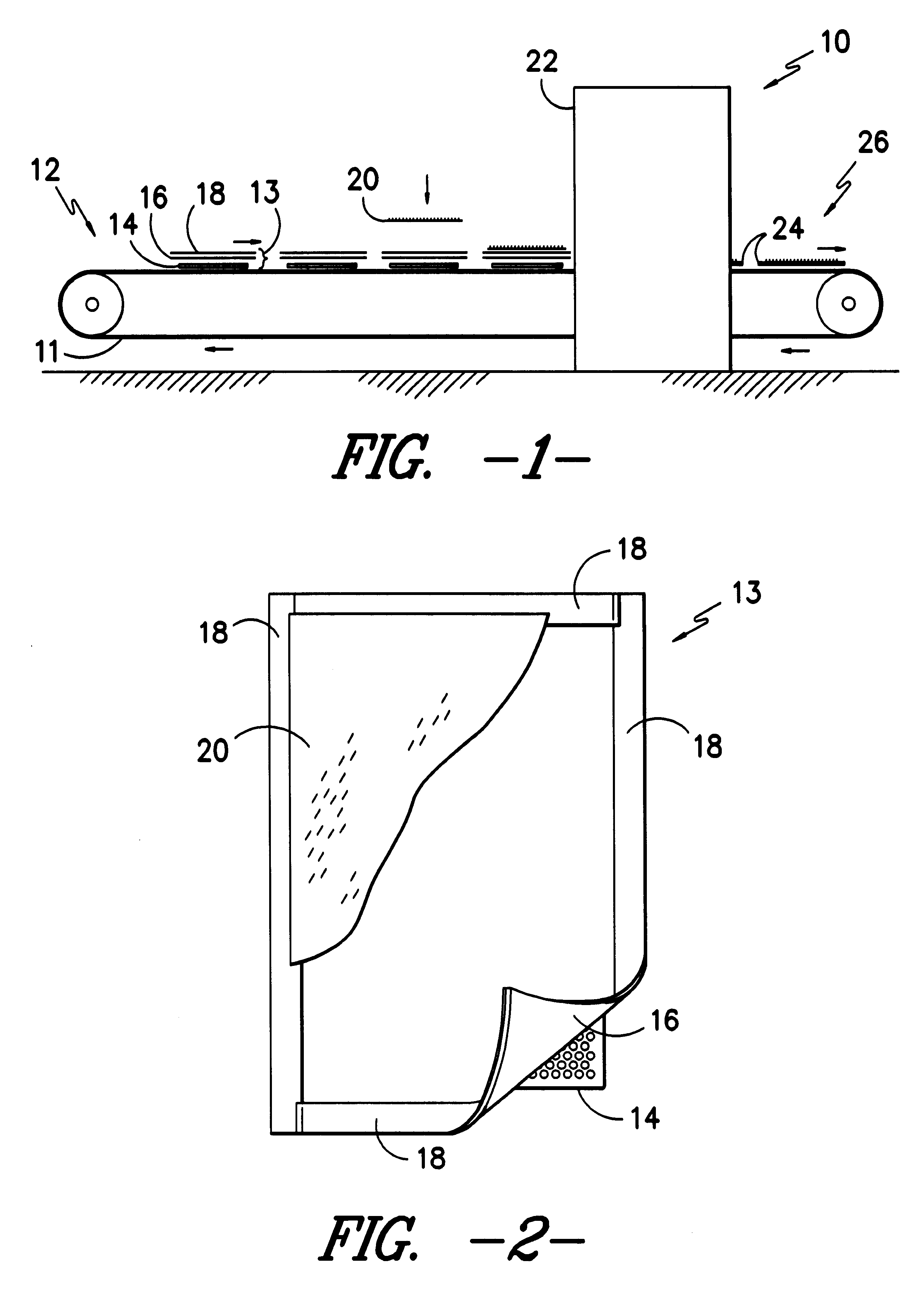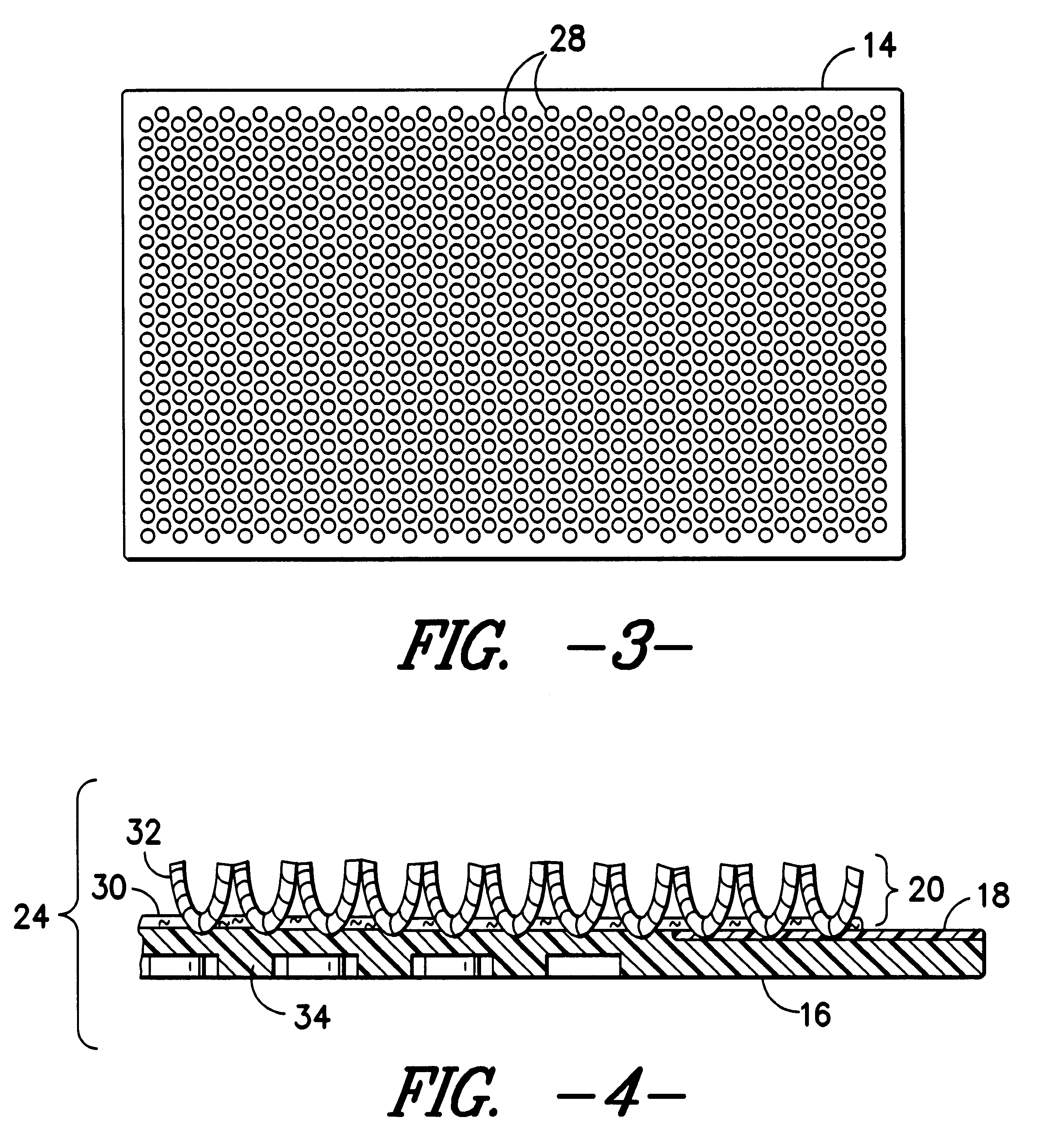Cushioned carpeted floor covering article comprising at least one integrated rubber protrusion
a carpeting and floor covering technology, applied in the direction of cleaning equipment, other domestic objects, transportation and packaging, etc., can solve the problems of not appreciably cushioning the foot of pedestrians, not providing cushioning characteristics with the same non-slip components, and not wanting and potentially dirtying floors to be removed
- Summary
- Abstract
- Description
- Claims
- Application Information
AI Technical Summary
Benefits of technology
Problems solved by technology
Method used
Image
Examples
example
A rubber sheet material was produced by fluxing together the materials as set forth in Table 1A in a standard rubber internal mixer at a temperature of about 280.degree. F. to 300.degree. F. for a period of one to two minutes. EPDM additions were varied as shown in Table 1A to yield ratios of EPDM to NBR of 3.0 (75 parts EPDM to 25 parts NBR); 1.5 (60 parts EPDM to 40 parts NBR); and 1.0 (50 parts EPDM to 50 parts NBR). Additions of curative agents as provided in Table 1B were then made. An Uncured sheet of the fluxed rubber compounds was then calendared, placed over a die mold having a plurality of cylindrically configured openings, covered partially with a pile fabric component (attached to a carrier fabric) and cured at a temperature of about 290.degree. F. for five (5) minutes under a pressure of about 40 psi and post cured at a temperature of about 290.degree. F. at atmospheric pressure for a period of five (5) minutes. The resultant floor covering article provided a significan...
PUM
| Property | Measurement | Unit |
|---|---|---|
| thickness | aaaaa | aaaaa |
| thickness | aaaaa | aaaaa |
| thickness | aaaaa | aaaaa |
Abstract
Description
Claims
Application Information
 Login to View More
Login to View More - R&D
- Intellectual Property
- Life Sciences
- Materials
- Tech Scout
- Unparalleled Data Quality
- Higher Quality Content
- 60% Fewer Hallucinations
Browse by: Latest US Patents, China's latest patents, Technical Efficacy Thesaurus, Application Domain, Technology Topic, Popular Technical Reports.
© 2025 PatSnap. All rights reserved.Legal|Privacy policy|Modern Slavery Act Transparency Statement|Sitemap|About US| Contact US: help@patsnap.com



